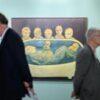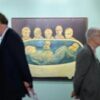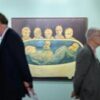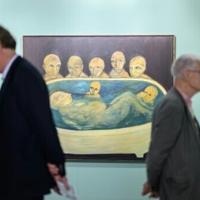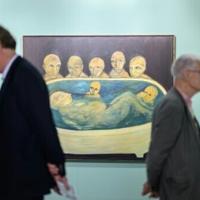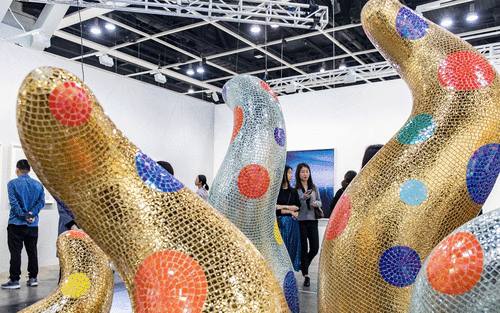
The weak yen could be one contributor to the renewed push to buy Japanese art. However, Japan’s art market is well known for being challenging both for galleries and buyers. Japanese law requires galleries to pay customs and a 10% sales tax up front on artworks, a cost which is later passed to the buyer upon the sale of the work. Until recently, Hong Kong, with its lack of a customs tax, was the go-to art hub of the region, but with COVID-19-related travel restrictions and lockdowns in place until recently, the Asian art market has looked elsewhere to cities such as Seoul, rather than turning to Tokyo.
Perrotin Tokyo senior director Stéphanie Vaillant was not at all surprised by the uptick. She says the energy in the market has changed drastically since the gallery opened about 7 years ago. And since COVID-19 has died down, she’s found a growing dynamism in the Tokyo scene, especially over the past year.
Vaillant points to a concentration of new large-scale events, including the Tokyo Gendai art fair, Art Collaboration Kyoto, and Art Week Tokyo. In addition, developer Mori Building’s new complex of three skyscrapers, Azabudai Hills, is bringing in new galleries; Pace Tokyo will open there in the spring. Vaillant feels that the art community is building and coalescing; in addition to Perrotin, she points to Blum Tokyo in Shibuya, and Ceysson & Bénétière, which announced last week it will open a space in Ginza. At the Piramide building in Roppongi, where Perrotin is based, one can also find Yutaka Kikutake Gallery, Ota Fine Arts, and a host of others.
This post was originally published on this site be sure to check out more of their content

